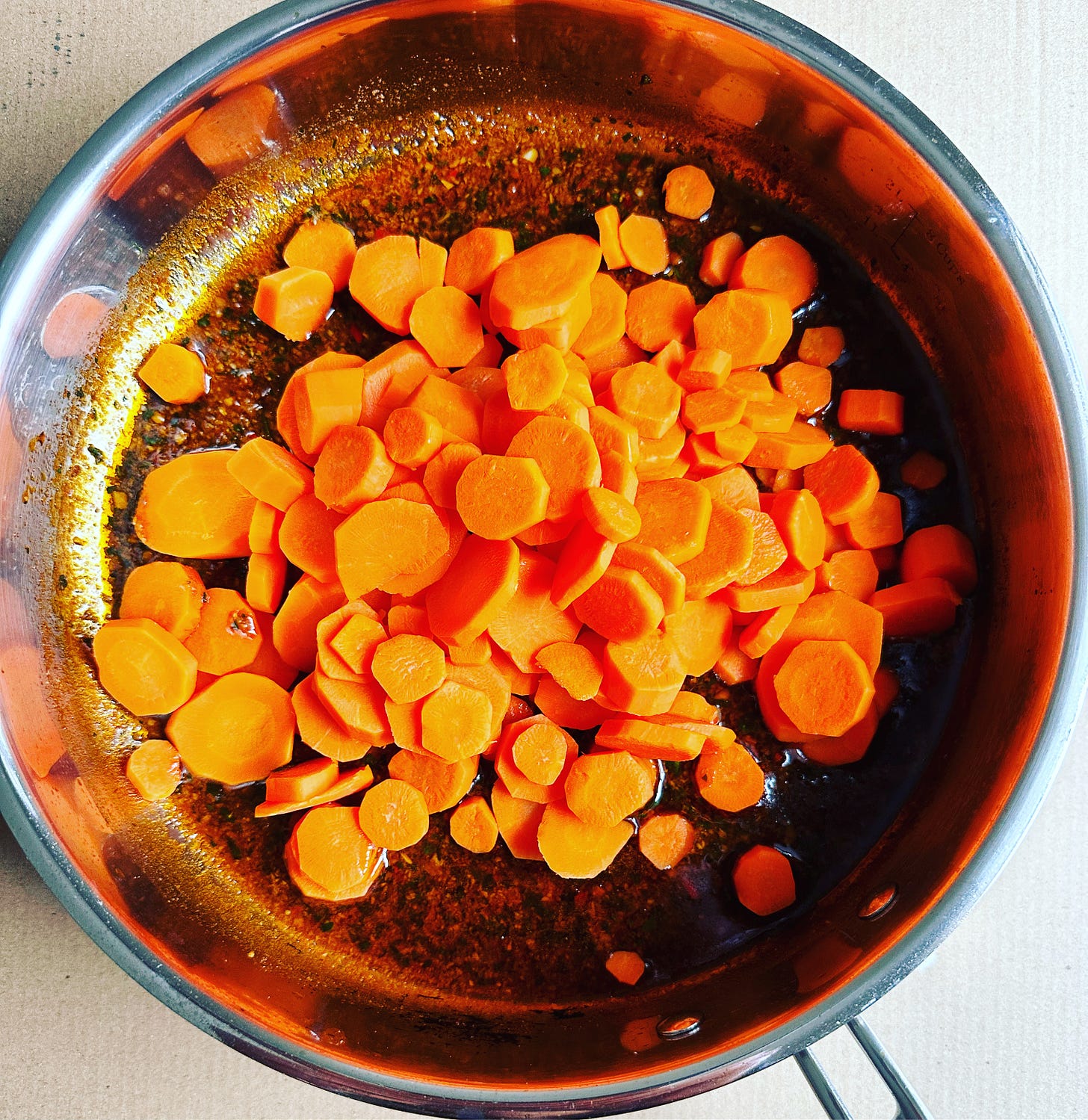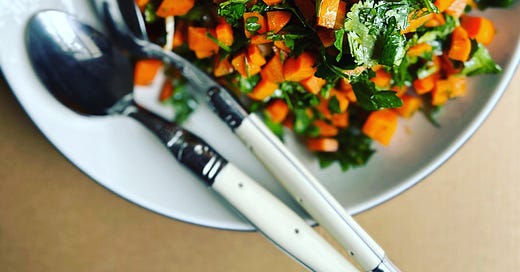Three Spicy Carrot Salads to Get You Through Winter
And to help put the carrot back in the spotlight, where it belongs.

THERE’S A THIN LINE BETWEEN being the reliable, cherished friend and becoming the open-hearted pal who does so much for others that you end up being taken for granted.
As humans, we are able to assert our personal boundaries in order to refuse the latter role. But what of the carrot? It has no such agency.
Carrots are accommodating, sweet, and stalwart. In fact, they are so easily storable that the grocer never runs out of them. Look, there they are right now, trying to get your attention as you ask the produce manager when the fancy Romanesco and rainbow chard will be coming in.
But neither of those flashier vegetables has the chameleonic personality of the carrot, which shows up almost dutifully in stews, soups, salads, soufflés, puddings, muffins, cakes, and cookies and can be eaten raw, boiled, juiced, roasted, grilled, pickled, and pureed. Etcetera.
The carrot will do anything you ask it to! And that’s part of its problem. It has Zeliged its way into so many dishes that its own vibrant personality sometimes gets lost.
I am not saying that the carrot has become the doormat of the United States vegetable world. I am saying that rather than glossy feature spreads in the food magazines, carrots get recipe roundups. (Nine hundred ways to use all those carrots!) I’m saying that almost no one walks into the farmer’s market or grocery-store produce section and cries Would you look at these carrots? I’m buying them all! I’ll figure out what to do with them later!
But plenty of people accidentally buy an extra sack or bunch of carrots because they can’t remember if they have them at home or not, which they do, because carrots last so long you forget to use them. It isn’t fair.
I often wonder how all of this happened to the carrot, which has been cultivated since the 8th century BC, at least, according to the Oxford Companion to Food, which cites record of the carrot’s presence in the royal garden of Babylon. Rather than the root, though, the plant’s leaves and seeds were most desirable early on, for medicinal and decorative purposes.
The fat, sweet, orange vegetable we know today is assumed to have been domesticated in 16th-century Holland, but wild carrots most likely originated in Afghanistan—as scraggly purple and red things with a reedy texture and bitter taste.
I like to imagine them frolicking in the wild in Central Asia—long before we made a habit of ripping off their pretty greens and stuffing them into plastic bags. Not yet knowing that a fate unworthy of them awaited them in the United States.
All this is exaggeration for effect, sort of. Because of course there are people and dishes here that treat the carrot with admiration and respect, especially in fancy restaurants that like to wow diners with their transformative skills.
And it is always possible to find someone who appreciates you deeply in this world. The carrot, for instance, has the World Carrot Museum.

But even a museum is not enough. The boys in the lab and I still feel the need to help carrots in the United States. We also want to help you, and we want to help ourselves to more carrots all winter long, when a dose of beta carotene is so comforting.
Keep reading with a 7-day free trial
Subscribe to The Department of Salad: Official Bulletin to keep reading this post and get 7 days of free access to the full post archives.







